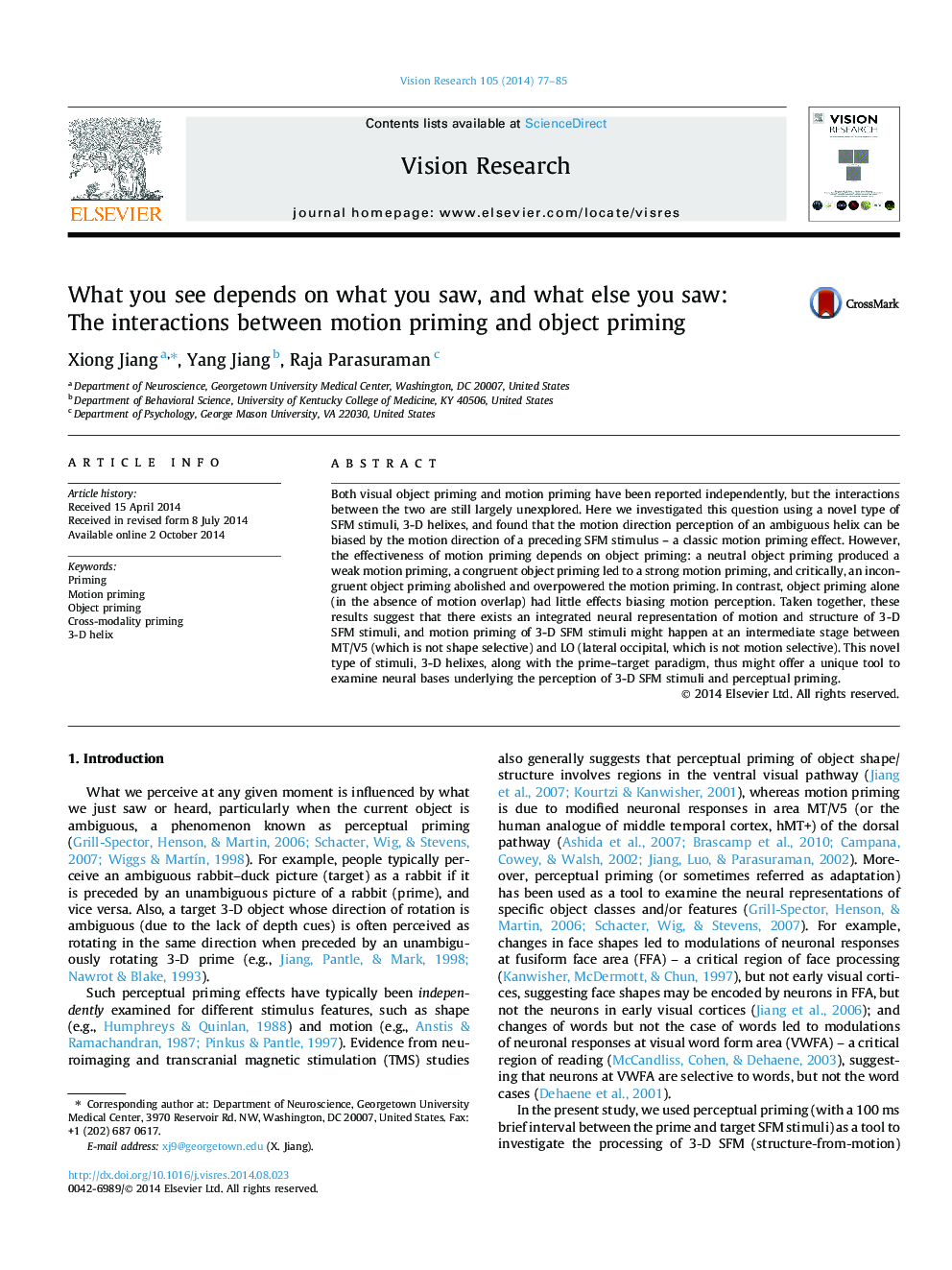| Article ID | Journal | Published Year | Pages | File Type |
|---|---|---|---|---|
| 6203267 | Vision Research | 2014 | 9 Pages |
â¢A congruent object priming enhanced motion priming.â¢An incongruent object priming abolished and overpowered motion priming.â¢Object priming alone had little or no impact on motion direction perception.â¢Dynamical and static illusory depth might have different neural representations.
Both visual object priming and motion priming have been reported independently, but the interactions between the two are still largely unexplored. Here we investigated this question using a novel type of SFM stimuli, 3-D helixes, and found that the motion direction perception of an ambiguous helix can be biased by the motion direction of a preceding SFM stimulus - a classic motion priming effect. However, the effectiveness of motion priming depends on object priming: a neutral object priming produced a weak motion priming, a congruent object priming led to a strong motion priming, and critically, an incongruent object priming abolished and overpowered the motion priming. In contrast, object priming alone (in the absence of motion overlap) had little effects biasing motion perception. Taken together, these results suggest that there exists an integrated neural representation of motion and structure of 3-D SFM stimuli, and motion priming of 3-D SFM stimuli might happen at an intermediate stage between MT/V5 (which is not shape selective) and LO (lateral occipital, which is not motion selective). This novel type of stimuli, 3-D helixes, along with the prime-target paradigm, thus might offer a unique tool to examine neural bases underlying the perception of 3-D SFM stimuli and perceptual priming.
